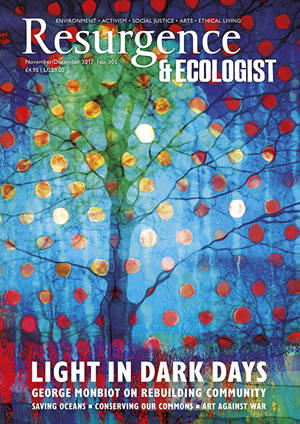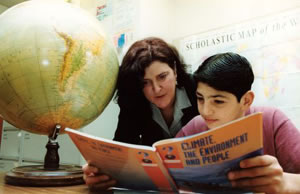Many adults have no interest in climate change, because unspoken taboos make it not a proper subject for discussion. If no one talks about it, it feels best not to rock the boat. This form of unconscious denial occurs because bringing it into the open might require acknowledgement of the uncomfortable feelings it brings up – incomprehension, worry, guilt, anger, helplessness, fear for the future. As a neighbour of mine said, “It’s not something I think about.” Such denial is not just a personal thing, but also a socially constructed phenomenon, held in place by social norms, the media and those in positions of authority.
Current updates on the impact of climate change – whether floods, forest fires, storms or rising sea levels – inevitably prompt questions about what might and should be going on in schools and in teacher education. We have a responsibility to help young people, the innocent inheritors of what we and previous generations have created, to develop the insights and skills needed to build a more sustainable future. We have no choice then but to educate them for a climate-changed world. One important way of doing this is through supporting and encouraging existing quality initiatives within education.
Schools vary a lot in what they may or may not do about climate change. Many do nothing at all. The subject most likely to consider aspects of climate change is geography. This area also helps young people explore a variety of issues related to sustainability and change. Cross-curricular initiatives worth mentioning include the following:
Schools interested in promoting the UN Sustainable Development Goals may use the term Education for Sustainable Development. The Global Learning Programme focuses on different aspects of global awareness. The Eco-Schools programme works to ensure that every aspect of sustainability is embodied in school practice. The Ashden Awards are given annually to schools that demonstrate a major commitment to sustainable energy. In different ways, these four initiatives take a whole-school approach to issues of sustainability (including climate change), which includes “campus, curriculum and community”.
To have an influence on schools, it is necessary to identify allies outside and inside the institutions. Young people also have their own ideas and concerns about climate change. One 15-year-old said confidently to me, “There’s nothing you can do about it.”
Climate change education is best approached through a four-fold model of learning that embraces Feeling/Knowing/Choosing/Acting.
Each aspect explores three specific questions:
Feeling: What do I/we feel about climate change? What are the concerns/fears that we wish to share? What are the hopes and aspirations that we have?
Knowing: What do we think we know/need to know about climate change? What are the main causes of climate change? What are the already occurring impacts of climate change?
Choosing: What are the options that appear to be facing us? What do I/we want to see happening? What should this school choose to do?
Acting: What can we do to adapt to and mitigate climate change? What are others doing at home/in schools/in their communities? Who is able to help us in what we wish to achieve?
Through the sharing of concerns and deeper learning, clearer choices can be made and a sense of empowerment experienced by students through working with like-minded others.








